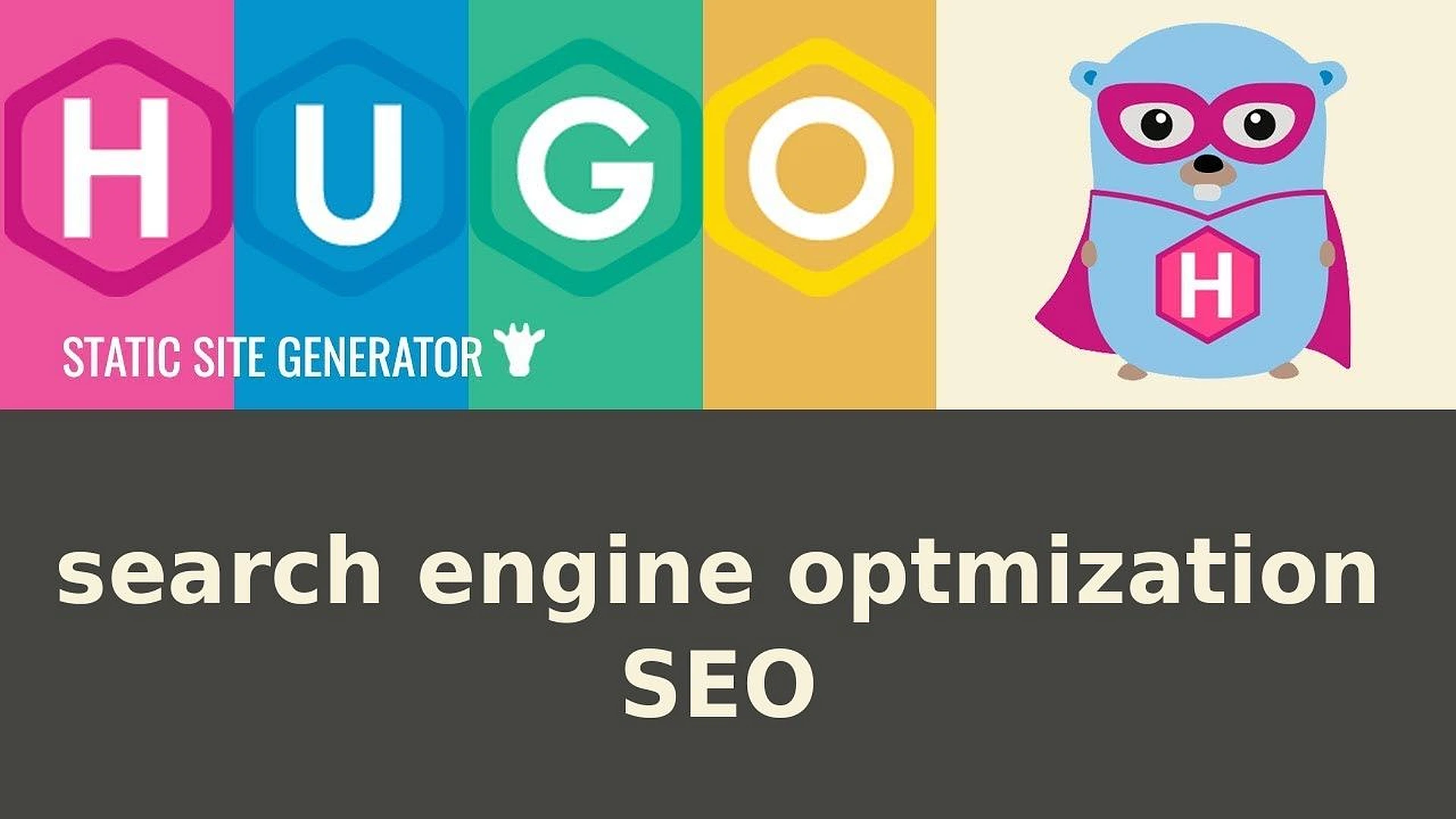Hugo website SEO

Hugo or your Hugo theme might provide some SEO components out of the box, but consider adding what it doesn’t, then tell google; bing and other search engines about your site.
1. Add SEO elements to your website
See also about SEO elements -> https://developers.google.com/search/docs/guides
Configuration
By default Hugo or your Hugo theme will give you:
-
A sitemap at
/sitemap.xml: useful to submit to search engines like google ( see below ). -
RSS feed.
Update your config.toml file to ensure you have a configuration similar to this:
# .config.toml
...
enableRobotsTXT = true
canonifyURLs = true
# and if you think your md file names or locations might change:
[permalinks]
post = "/blog/:title/"
...
Add a Schema.org partial:
See also about structured data snippets -> https://developers.google.com/search/docs/guides/intro-structured-data
Add a modified header partial to reference a seo partial. This will override the header partial in your theme, so start with a copy of that file and add:
# layouts/partials/header.html
...
{{ partial "seo_schema" . }}
<title>
...
Add a seo_schema partial
// layouts/partials/seo_schema.html
<script type="application/ld+json">
{
"@context" : "http://schema.org",
"@type" : "BlogPosting",
"mainEntityOfPage": {
"@type": "WebPage",
"@id": "{{ .Site.BaseURL }}"
},
"articleSection" : "{{ .Section }}",
"name" : "{{ .Title }}",
"headline" : "{{ .Title }}",
"description" : "{{ if .Description }}{{ .Description }}{{ else }}{{if .IsPage}}{{ .Summary }}{{ end }}{{ end }}",
"inLanguage" : "en-US",
"author" : "{{ range .Site.Author }}{{ . }}{{ end }}",
"creator" : "{{ range .Site.Author }}{{ . }}{{ end }}",
"publisher": "{{ range .Site.Author }}{{ . }}{{ end }}",
"accountablePerson" : "{{ range .Site.Author }}{{ . }}{{ end }}",
"copyrightHolder" : "{{ range .Site.Author }}{{ . }}{{ end }}",
"copyrightYear" : "{{ .Date.Format "2006" }}",
"datePublished": "{{ .Date }}",
"dateModified" : "{{ .Date }}",
"url" : "{{ .Permalink }}",
"wordCount" : "{{ .WordCount }}",
"keywords" : [ {{ if isset .Params "tags" }}{{ range .Params.tags }}"{{ . }}",{{ end }}{{ end }}"Blog" ]
}
</script>
2. Google Search Console
Track your site’s search performance with Google Search Console and browse around for more webmaster resources : https://www.google.com/webmasters/tools/home
In Google’s Webmasters Console:
- Add a property (your website)
- Add the html page as required by google to verify ownership
- Submit the sitemap (/sitemap.xml) for indexing
- Wait.
Return to the Google Search Console after several days to see if your site has been indexed. A queued request typically takes several days for a successful request to be granted. Google doesnt guarantee that it will index all your changes, as it relies on a complex algorithm to update indexed materials.
3. Bing webmaster tools
The Bing Webmasters Console is here: https://www.bing.com/toolbox/webmaster/
In Bing’s Webmasters Console, Add your site, details and verify.
Bing offers 3 ways to verify ownership:
- Add an xml file;
- Add a metatag;
- Add a CNAME record in your DNS.
Now wait for Bing to complete the indexing.
4. Yandex webmaster tools
This is for DuckDuckGo.
Yandex and Bing both contribute to DuckDuckGo’s indexing ( Yandex has a partnership with DuckDuckGo according to https://blog.r3bl.me/en/exploring-duckduckgo-for-smaller-websites/ )
The Yandex Webmasters Console is here: https://webmaster.yandex.com
Click the + button at the top of the screen and enter your site address
Yandex offers 4 ways to verify ownership:
- Add an HTML file;
- Add a metatag;
- Add a TXT record in your DNS.
- Use the WHOIS email
After verification, add the sitemap file /sitemap.xml.
Now wait a couple of weeks.
















